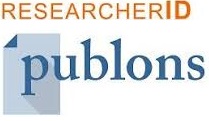Activités Biologiques Et Flavonoide De Kaliphora Madagascarensis (MONTINIACEAE)
Abstract
L’étude de Kaliphora madagascariensis, une plante médicinale endémique de Madagascar, rentre dans le cadre de la dynamique de recherche de nouvelles substances bioactives plus particulièrement des composés dotés de propriétés anti-inflammatoire, antioxydante et antibactérienne..Le screening phtochimique menée sur l’extrait hydroalcoolique a révélé la présence d’alcaloïdes à l’état de trace et des stéroïdes du type stérol insaturé, des flavonoïdes du type flavonol en quantité abondante, des tanins et des polyphénols. L’évaluation des activités biologiques des extraits éthanolique (EEt), hexanique (EHex), acétate d’éthyle (EAc) et butanolique (EBu) a montré que les extraits EHex, EAc et EBu présentent tous une activité anti-inflammatoire significative bien que de manière différenciée. De même, EAc et EBu présentent chacun une activité antioxydante modérée mais encourageante. L’extrait EAc, ayant présenté les meilleures activités anti-inflammatoire et antioxydante, a été soumis .à un test de toxicité aigüe. L’administration orale à la dose de 180 mg/kg n’a provoqué aucun décès.
L’étude de l’extrait acétate d’éthyle EAc a conduit à l’isolement d’un composé 1 de nature triterpénique et du composé 2 ainsi que du composé 3 tous deux du type flavonoidique puis à l’élucidation de structure du composé 3 comme étant la Quercétine-3-O-β-(rhamnopyranosyl-(1α→2)-glucopyranoside).par le biais d’une analyse incluant le spectre de masse et les spectres RMN mono et bidimensionnelle.
Keywords
Full Text:
PDFReferences
. Pelt J.M. (2001). Les nouveaux actifs naturels. Marabout. Paris
. Razafindrambao R. (1971). Contribution à l’inventaire des plantes medicinales des Hauts-Plateaux de Madagascar. Contribution to the list of medicinal plants of Malagasy highlands. Paris : ORSTOM, Travaux et Documents 8 : p 67.
Boiteau P, Allorge-Boiteau L. (1999). Dictionnaire des noms malgaches des vegetaux (Dictionary of Malagasy plant name). Grenoble : Editons Alzieu. 3: 187.
Fong H.H.J., Tin W.A.M. and Farnsworth N.R. (1977). Phytochemical. Screening. University of Illinois, Chicago Review, p 73-126.
. Houghton P.J. et Raman A. (1998).. Laboratory Handbook for the Fractionation of Naturals Extracts. Editions Chapman and Hall first collection, New York, NY USA,
. OECD, (2008). OECD test guideline 425-National Toxicology Program.
. Bulgheroni A., Kinsner-Ovaskainen A., Hoffmann S., Hartung T, Prieto P., (2008). Estimation of acute oral toxicity using the No Observed Adverse Effect Level (Noael) from the 28 days repeated dose toxicity studies in rats. Regulatory Toxicology and Pharmacology 53:16–19,
Onifade A. O., Ouedraogo M., Zongo F. E., Kafando E., Lompo M. E., Guissou I.P. , (2011) Acute toxicity and antiinflammatory activity of aqueous ethanol extract of root bark of Ximenia americana. Afr. J. Pharm. Pharmacol., 5 (7), 806-811.
Winter C.A., Risley E.A. et Nuss G.W. (1962). Carragenin-induced edema in hind paw of the rat as an assay for antiinflamatory drugs. Experimental biology and medicine. 111 (3) :544-547, http : //doi.org/10.3181/00379727-111-27849.
Takao T., Kitatami F., Watanabe N., Yagi A. and Sakata K. (1994). A simple screening method for antioxidants and isolation of several antiradicalaires produced by marine bacteria from fish and shell fish. Bioscience, Biotechnologie and biochemistry. 58: 1780-1783.
Awika J.M., Rooney L.W., WU X., Prior R.L., Cisneros-Zevallos L. (2003)., Screening method to measure antioxidant activity of sorghum (Sorghum bicolor) and sorghum products. Journal Agricultural and Food chemistry, 51(23) : 6657-6662,
Molyneux P. (2004). The use of stable free radical diphenylpicrylhydrazyl (DPPH) for
estimating antioxidant activity. Songklanakarin Journal of Science and Technology. 26 (2) : 211-
Meddour A., Yahia M., Benkiki N., Ayachi A. (2013). Etude de l’activité antioxydante et antibactérienne des extraits d’un ensemble des parties de la fleur du Capparis spinosa L. Lebanese Science Journal. 14(1) : 49-60.
Brand-Williams W., Cuvelier M. E. and Berset C. (1995). Use of a free radical method to evaluate antioxidant activity. LWT-Food Science and Technology. https ://doi.org/10.1016/S0023-6438(95)80008-5. 1: 25-30
Abad-Garcia B., Garmon-Lobato S., Berrueta L., Gallo B. and Vicente F. (2009). Practical guidelines for characterization of O-diglycosyl flavonoid isomers by triplequadrupole MS and their applications for identification of some fruit juices flavonoids, Journal of Mass Spectrometry. 44 : 1017-1025.
Markham K.R. (1982). Techniques of Flavonoid Identification. Academic Press. London.
Markham K.R. and Ternai B. (1976). Carbon-13 NMR of flavonoids-II: Flavonoids other then flavone and flavonol aglycones. Tetrahedron. 32: 2607-2612.
Muhammad D. (2013). Etude phytochimique et Biologique des trois alphitonia (Rhamnaceae) endémiques à la Nouvelle-Calédonie. Phytochimie. Unité de Formation et de Recherche de Pharmacie. Université de Reims Champagne- Ardenne. Thèse.p 318.
[ 19] Fico G., Rodondi G., Flamini G., Passarella D., Tome F., (2007). Comparative phytochemical and morphological analyses of three Italian Primula species. Phytochemistry. 68: 1683–1691
Kazuma1 K., Noda1 Noda1 N., Suzuki M. (2003) Malonylated flavonol glycosides from the petals of Clitoria ternatea. Phytochemistry.. 62: 229–237
G.B., Adeoti M.F., Djaman A.J., Guede-Guina F. et Sess E.D. (2010). Evaluation de la toxicité aigüe de l’extrait total aqueux d’écorces de Mansonia altissima (BOIS BETE) chez les souris. Journal scientifique. Pharmaco-biochimie. UFR Biosciences. Université de Cocody. Abidjan. Côte d’Ivoire p 13-20
DOI: http://dx.doi.org/10.52155/ijpsat.v53.1.7505
Refbacks
- There are currently no refbacks.
Copyright (c) 2025 Aina Raharilavitra

This work is licensed under a Creative Commons Attribution 4.0 International License.



















